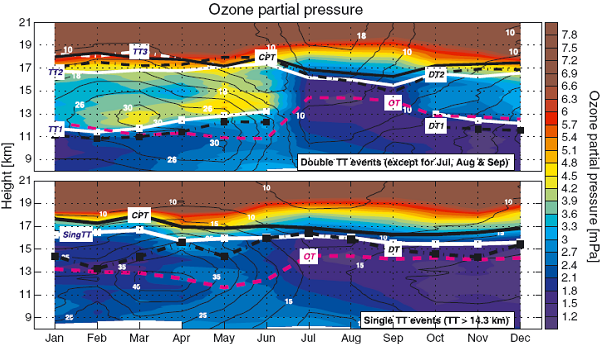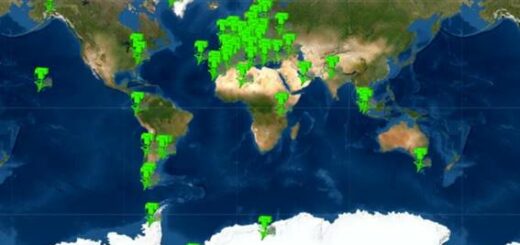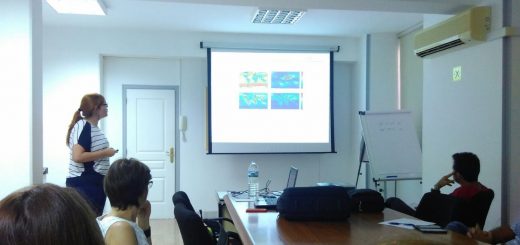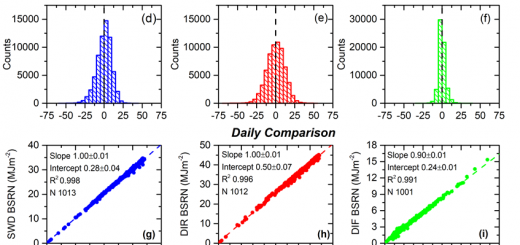New paper in the Journal of Geophysical Research-Atmospheres: “Characteristics of the subtropical tropopause region based on long-term highly resolved sonde records over Tenerife”, by Juan José Rodriguez-Franco and Emilio Cuevas.

The paper entitled “Characteristics of the subtropical tropopause region based on long-term highly resolved sonde records over Tenerife” has been published in the Journal of Geophysical Research-Atmospheres on October 2nd, 2013.
The full references is:
Rodriguez-Franco, J.J., and E. Cuevas, Characteristics of the subtropical tropopause region based on long-term highly resolved sonde records over Tenerife, JGR-Atmospheres, Vol. 118, 1–16, doi:10.1002/jgrd.50839, 2013.
You can download the paper at:
http://onlinelibrary.wiley.com/doi/10.1002/jgrd.50839/abstract
In this study the main features of the subtropical tropopause region over Tenerife (the Canary Islands, Spain; 28°N, 16°W) are examined and characterized using a 20-year (1992–2011) ozonesonde data and European Center for Medium-Range Weather Forecasts ERA-Interim potential vorticity (PV) and zonal wind speed reanalysis.
This study introduces new insights since high-resolution vertical profiles allowed a detailed description of the subtropical tropopause break and the associated subtropical jet stream (STJ), where models fail to properly simulate the upper troposphere–lower stratosphere (UTLS). The subtropical UTLS, which is rather thick (~8 km) and complex region is analyzed by evaluating four different tropopause definitions: thermal (TT), Cold Point (CPT), ozone (OT), and dynamical (DT) tropopauses.
A novel method to determine the DT based on the vertical gradient of Lait’s modified PV is presented. This method represents an analytical improvement for DT determination from model reanalysis. The concept of a second DT and a second OT has been introduced for the first time, showing an excellent agreement with the second thermal tropopause and the cold point tropopauses.

Time-height cross section of ozone partial pressure (mPa) and wind speed contours (ms–1) from 8 to 21 km height for (top) multiple and (bottom) single thermal tropopause events. The vertical coordinate is tropopause based. The different tropopause types are shown labeled with their corresponding acronym. TT1, TT2 and TT3 are the first, second and third thermal tropopauses, respectively; DT1 and DT2 are the first and second dynamical tropopause, respectively; OT is the ozone tropopause, and CPT is the Cold-Point tropopause.
The 14.3 km height level is used to differentiate between tropical and extratropical UTLS regimes, intimately linked to the position of the STJ. There is fairly good consistency between all the defined tropopauses under the double tropopause scheme, except in spring, when the OT is observed at lower levels due to frequent baroclinic instabilities in the upper troposphere.
In winter, altitude differences between OT, DT, and TT resulted from poleward STJ excursions forced by blocking systems over the North Atlantic. Analysis of the tropopause inversion layer showed distinctive features for tropical and midlatitude tropopauses.







